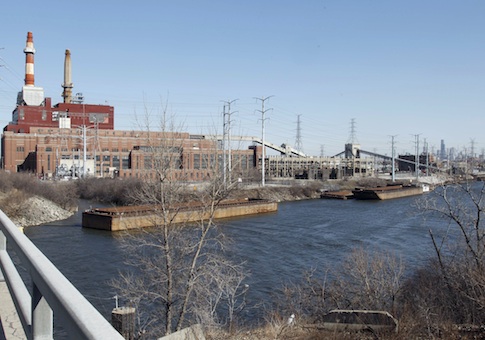Emails between the Sierra Club and the EPA produced through a Freedom of Information Act (FOIA) lawsuit show the green group and senior officials at the nation’s top environmental enforcer met and corresponded frequently about the agency’s work on new coal regulations.
The EPA published its long-awaited New Source Performance Standards for new coal-fired plants on Wednesday, four months after the agency announced their creation.
The EPA has repeatedly said the regulations on coal-fired power plants will not be a death blow to the industry. However, the agency was working closely behind the scenes with the Sierra Club, an environmental organization that was pushing the agency to adopt standards that would be impossible for power plants to meet.
Many of the emails are between John Coequyt, head of the Sierra Club’s "beyond coal campaign," and the EPA’s Michael Goo and Alex Barron, both in the agency’s office of policy at the time.
Coequyt warned Goo and Barron in one 2012 email that several proposed power plants on hiatus because of regulatory uncertainty could be built if the EPA set an achievable standard.
"Attached is a list of plants that companies said were shelved because of uncertainty around GHG [greenhouse gas] regulations," Coequyt wrote to Goo and Barron. "If a standard is set that these plants could meet, there is a small chance that they [sic] company could decide to revive the proposal."
The EPA’s new regulations on coal-fired power plants are required by law to be technologically viable and commercially available.
However, the fossil-fuel industry argues the rules, which require so-called "carbon capture and storage" (CCS) technology, will effectively stop the construction of any future coal power plants.
The EPA insists the technology is viable and not an attempt to squelch new coal plants.
"EPA's regulatory approach toward the power sector seeks to ensure a clear path forward for coal," an EPA spokesperson said in a statement to the Washington Free Beacon. "Current and planned implementation of CCS projects, combined with the widespread availability and capacity of geological storage sites, makes it clear that the technology is feasible. Energy forecasts indicate that coal will remain an important part of America's electricity generation mix. The agency's regulations will not change that."
Behind the scenes, though, the viability of CCS appeared to be in question.
Coequyt forwarded n a 2011 email an article to Goo and Barron regarding then-assistant EPA administrator Gina McCarthy’s comments on the proposed CCS regulations.
"While it’s a significant economic lift, (the proposed standard) will provide investment for new technologies," McCarthy said. "CCS is technologically viable."
The headline read: "Coal to remain viable, says EPA’s McCarthy."
"Pants on fire," Coequyt wrote to Barron and Goo.
"Pants on fire" is a truth rating used by the news organization Politifact to describe a statement that is "not accurate and makes a ridiculous claim."
The EPA redacted Barron’s response in the email chain.
Other emails show Goo and Coequyt arranging meetings at a Starbucks in a nearby J.W. Marriott and frequent requests for phone conversations.
Coequyt suggested a list of cities for the EPA to hold hearings on a proposed carbon protection rule. Joseph Goffman, the senior counsel to McCarthy at the time, forwarded the list to the EPA Office of Air Quality Planning and Standards.
The EPA delayed releasing the new coal rules in April 2013, using the additional time to make them more likely to survive the inevitable legal challenges. The changes did little to assuage coal advocacy groups, such as the American Coalition for Clean Coal Energy, who have vowed to challenge the regulations in court.
"One must wonder what EPA was doing for the four months it took to post its NSPS to the Federal Register, since the rule remains just as destructive and ill-conceived as it was in September," ACCCE president Mike Duncan said in a Wednesday statement. "Contrary to claims made by EPA and other administration officials, NSPS is just another step in President Obama’s dangerous climate change campaign that’s putting America’s energy future in jeopardy."
Goo was formerly the legislative director of the Natural Resources Defense Council, another powerful environmental group. A large number of former NRDC employees have gone on to high positions on Capitol Hill and in federal agencies, leading one former staffer to refer to it as "the NRDC mafia."
Goo left the EPA for a position at the Department of Energy.
McCarthy is now the EPA administrator.
The emails cited above were obtained by Chris Horner, the litigation director of the conservative political advocacy group American Tradition Institute, through a FOIA lawsuit against the EPA.
Coequyt did not respond to a request for comment. However, he did comment on the new rules for the liberal outlet ThinkProgress.
"It’s important because it establishes the form that these regulations will take," Coequyt said in a phone interview with ThinkProgress Thursday. "It is the legal precedent. It shows that the administration is going to meet the timeline it established and is going to move forward. It’s a clear signal that they are serious about finally addressing carbon pollution from power plants."
